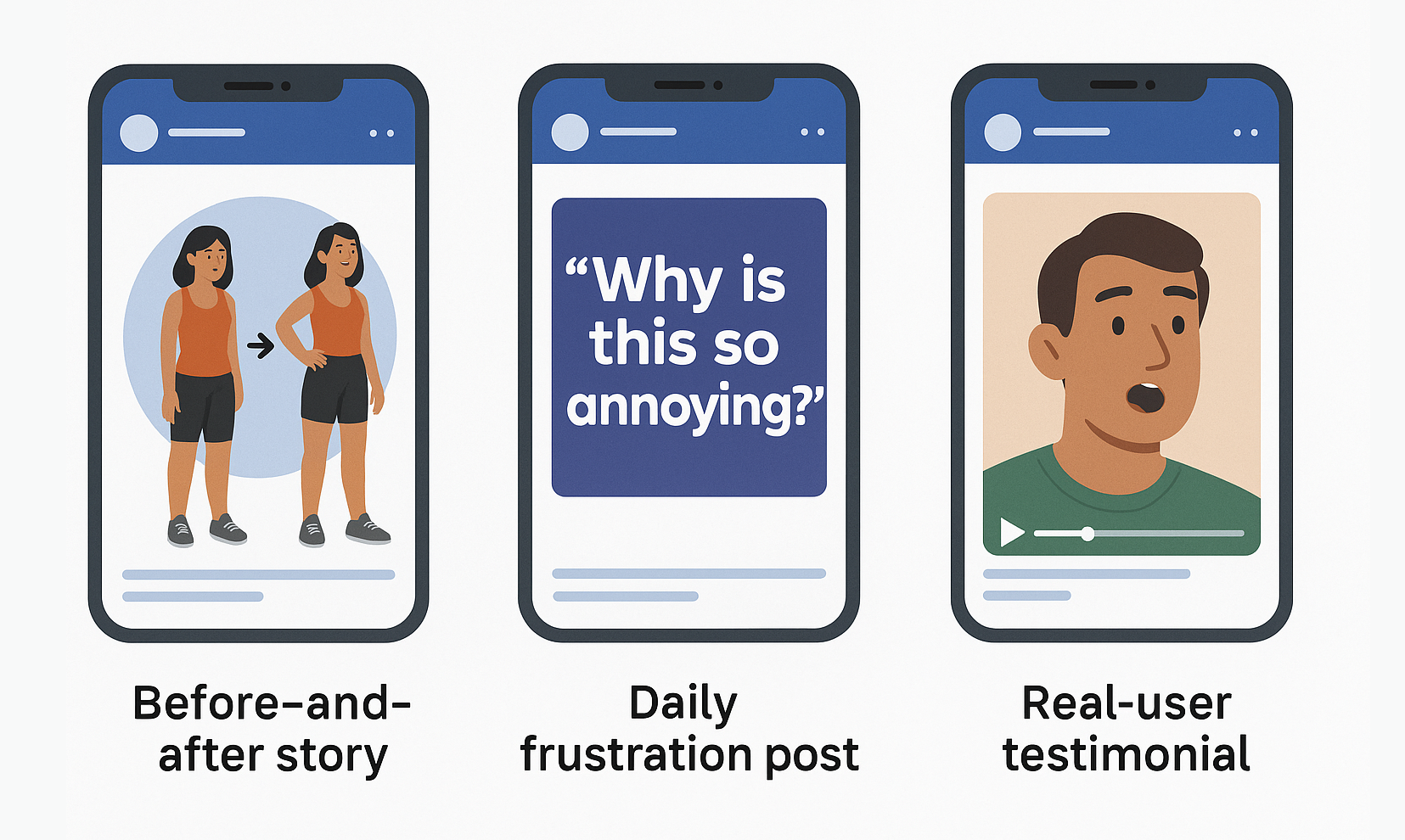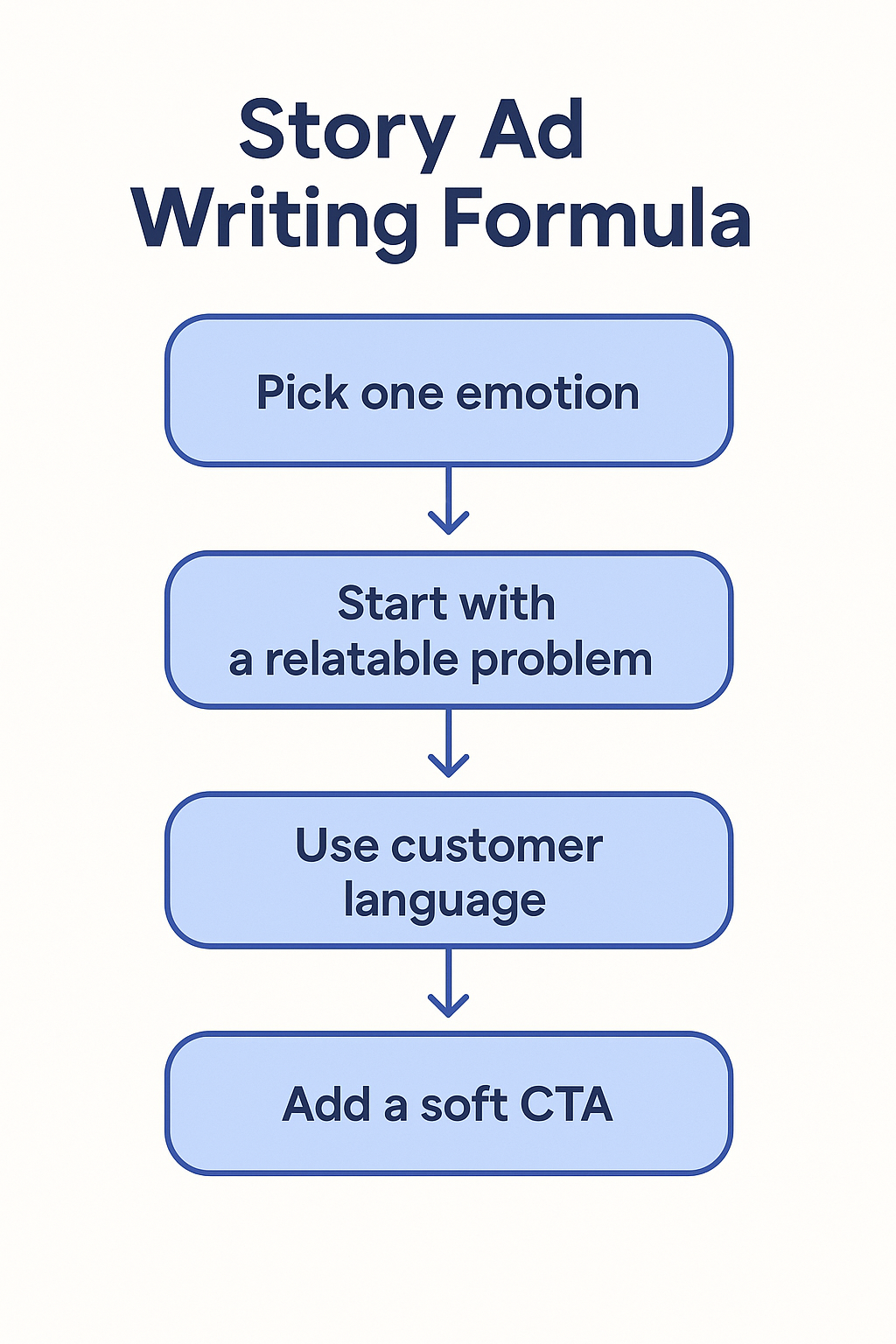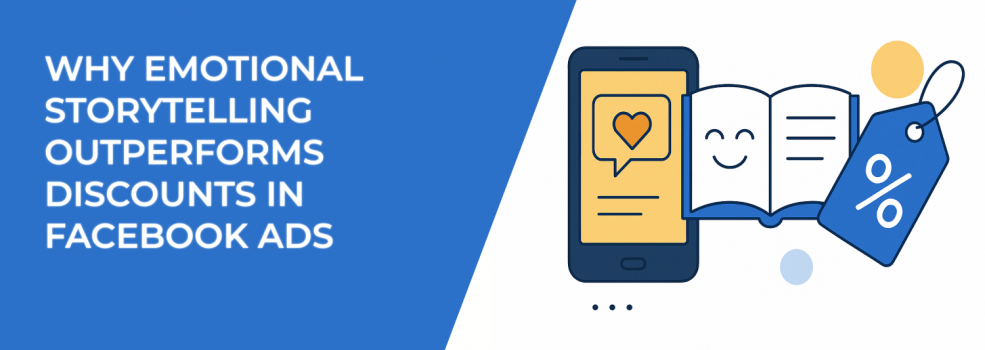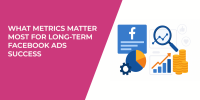When you scroll through your Facebook feed, what makes you stop? A bold red banner shouting "50% OFF" — or a video of someone just like you, frustrated, overwhelmed, and finally finding relief?
For most people, the emotional story wins. Not because the discount doesn’t matter, but because it doesn’t connect. And connection is what makes people click, engage, and buy.
Discounts Grab Attention — But Often Cheapen the Brand
Promotions work until they don’t. Relying on constant discounts can:
-
Attract low-intent buyers who never purchase at full price;
-
Shrink your margins and inflate acquisition costs;
-
Reduce brand equity over time.
These short-term wins often create long-term problems. Once your audience gets used to seeing a discount, they start ignoring full-price ads entirely. This forces you into a never-ending discount loop, where profitability suffers. Instead of training people to value your product, you train them to wait for a better deal.
Emotional storytelling, by contrast, builds memory, trust, and long-term loyalty — even before someone is ready to buy. And those clicks tend to cost less, too.
Why Emotional Storytelling Converts Better
Emotion activates decision-making. In fact, emotional content lights up the brain's limbic system — the same area that drives behavior. That means if your ad taps into a feeling, it becomes more than just an impression — it becomes a moment.
Here’s why emotional stories often beat discounts in paid social:
-
They build relatability: People see themselves in your ad.
-
They build trust: Stories signal authenticity. Discounts don’t.
-
They are more memorable: Stories linger in the brain longer than offers.
-
They lead to better quality leads: The people who click tend to have a problem they genuinely want to solve.
Consider this: someone may scroll past 10 ads with discounts, but stop on a story that reflects their exact struggle. That pause is everything — it creates a moment of recognition. From there, it’s a shorter journey to conversion.
What Kind of Stories Work on Facebook?
Not all stories work equally well. On Facebook, you’re working with limited space and attention.

So the best performing emotional ads are usually:
1. The Before-and-After Narrative
These work especially well for software, services, or any brand with a clear transformation. Start with the problem. Zoom in. Then show the outcome.
Example: "Before using this CRM, I spent 2 hours a day just organizing leads. Now, I get that time back to close deals."
To make this format perform, highlight a moment of realization or a turning point — not just results. Use contrast, time saved, money earned, or peace of mind gained. Video testimonials work great here.
2. The Daily Life Frustration
Speak to a struggle your audience faces every day. This kind of story creates immediate empathy.
Example: "Running ads that get clicks — but zero sales? Here’s why that was happening to me."
Use vivid detail and conversational tone. Show that you understand the pain point better than your competitors. Then gently lead into your solution. Bonus points if you use humor — just don’t force it.
3. The Real-User Testimonial
Use UGC or narrative testimonials with real quotes. But add setup and context — frame the moment, not just the praise.
Example: "Jenna runs a small online boutique. She launched her first campaign with just $10 a day — and got her first sale in less than 24 hours."
Want to turn UGC into story-driven creative? This guide to user-generated content in Facebook ads can help you do it right.
In this format, short videos perform especially well. Let users speak in their own words — don’t over-polish. Authenticity is what sells.
How to Add Emotion Without Sounding Cheesy
Adding emotion doesn’t mean writing Oscar-worthy scripts. It just means writing like a human.
Here’s how to do it well:
-
Focus on one emotion per ad: Don’t stack joy, anger, and pride. Pick one;
-
Use concrete language: "Struggling to find your first client" is better than "Feeling stuck in your business";
-
Write like your customer talks: Review product reviews, survey answers, and support tickets;
-
Start with the problem: Most emotional arcs start with pain — not success.
If you overdo it, your ad starts to sound manipulative or fake. Instead, focus on small truths. The specific moment your audience thinks: “Yes, that’s exactly what I’m dealing with.”
Need help defining your audience’s true struggles? Here’s a detailed guide to Facebook ad targeting 101 to make sure your stories hit the right audience.
How to Test Story-Based vs Discount-Based Ads
Want to prove emotional storytelling works? Run a simple A/B test:
-
Ad A: Standard offer — "Get 20% Off Now!";
-
Ad B: Story-based — highlight a relatable transformation or moment;
-
Same audience. Same budget.
Then track these metrics:
-
CTR: Story ads tend to earn more clicks, even with no discount;
-
CPC: If your emotional hook is strong, you’ll pay less per click;
-
Post-click metrics: People who resonate with the story stay longer on your landing page.
Make sure you keep other variables consistent — headlines, call-to-action, even imagery — so you’re really testing the story vs offer angle. If your story ad doesn’t perform right away, don’t give up. Try different hooks, emotions, or user types.
If you're seeing delivery issues while testing creative types, check out this article on why Facebook shows 'Ad Set May Get Zero' — and how to fix it fast.
When Should You Still Use Discounts?
There are moments when discounts do make sense:
-
Post-cart abandonment campaigns: to recover warm leads who showed intent;
-
Black Friday/Cyber Monday sales: where consumers expect and hunt for deals;
-
Introductory offers for cold audiences: to reduce friction for first-time buyers.
But use them strategically — paired with a story or as a reward for engagement. Try positioning discounts as a gift rather than a bribe. For example: "Because you’ve been following our story — here’s something for you."
Emotions + Targeting = Results
The best emotional ads mean nothing if they reach the wrong people. Combine story-driven creative with smarter targeting:
-
Segment by need state — not just age or interest;
-
Use custom audiences based on behavior;
-
Build lookalike audiences from high-LTV customers.
Refine your strategy over time by analyzing which storylines work best for different segments. Need a targeting refresh? Start with this step-by-step guide to defining a target audience for Facebook.
Final Takeaway: Make Them Feel, Then Make Them Click
In a world full of "Buy Now" and "Limited Time Offers," emotion is your edge.
It makes you stand out. It makes you memorable. It builds brand and conversion at the same time.
So ask yourself this: next time you plan a campaign — what do you want your audience to feel?
Because if you can answer that, you’re already ahead of most advertisers.

